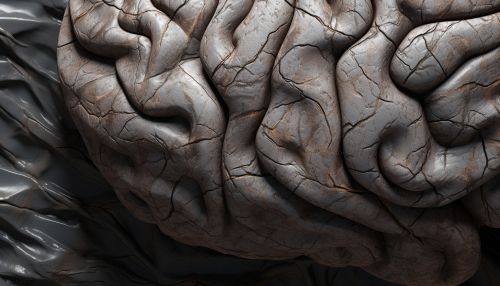Cortex
Anatomy and Structure
The cortex is the outermost layer of an organ or tissue in the body. In the context of the brain, the cortex refers to the cerebral cortex, which is the outermost layer of the cerebral hemispheres and is responsible for higher brain functions such as sensation, voluntary muscle movement, thought, reasoning, and memory. It is made up of six layers, each with a specific function and a unique population of neuronal cells.


The cortex is divided into two hemispheres: the left hemisphere and the right hemisphere. Each hemisphere is further divided into four main lobes: the frontal lobe, the parietal lobe, the occipital lobe, and the temporal lobe. Each lobe is associated with different functions. For example, the frontal lobe is associated with reasoning, planning, parts of speech, movement, emotions, and problem-solving, while the temporal lobe is associated with perception and recognition of auditory stimuli, memory, and speech.
Neuronal Composition
The cortex is composed primarily of two types of cells: neurons and glial cells. Neurons are the primary functional units of the nervous system, responsible for transmitting information throughout the body. Glial cells, on the other hand, provide support and protection for neurons. They are also involved in nutrient supply, waste removal, and immune defense in the brain.
The neurons in the cortex can be classified into two main types: pyramidal cells and non-pyramidal cells. Pyramidal cells are the most common type of neuron in the cortex and are responsible for most of the output from the cortex to other parts of the brain and spinal cord. Non-pyramidal cells, on the other hand, are primarily involved in local processing within the cortex.
Function
The cortex plays a crucial role in many higher cognitive functions. These include sensory perception, motor control, spatial reasoning, conscious thought, and language. Different areas of the cortex are associated with different functions. For example, the primary visual cortex, located in the occipital lobe, is responsible for processing visual information. The primary auditory cortex, located in the temporal lobe, processes auditory information.
In addition to these primary areas, there are also numerous association areas in the cortex that integrate information from multiple sensory and motor areas to perform more complex functions. For example, the prefrontal cortex, located in the frontal lobe, is involved in planning complex cognitive behavior, personality expression, decision making, and moderating social behavior.
Pathology
Various diseases and conditions can affect the cortex, leading to a range of neurological and psychiatric symptoms. These include neurodegenerative diseases such as Alzheimer's disease and Parkinson's disease, which are characterized by the progressive loss of neurons in the cortex and other areas of the brain. Stroke, a condition caused by a disruption in the blood supply to the brain, can also damage the cortex, leading to a loss of brain function.
Epilepsy, a neurological disorder characterized by recurrent seizures, often involves abnormal electrical activity in the cortex. In addition, various psychiatric conditions, such as schizophrenia and depression, have been associated with abnormalities in the structure and function of the cortex.
